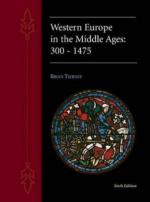|
This section contains 1,344 words (approx. 5 pages at 300 words per page) |

|
The School at Chartres.
The ascendancy of Paris as the intellectual center not only of France but of all of Europe was by no means inevitable. In the first half of the twelfth century, in fact, Paris's rival was the school at Chartres, some fifty miles to the south. The cathedral school there enjoyed a succession of first-rate masters, whose focus was the seven liberal arts: arithmetic, geometry, astronomy, music, grammar, rhetoric, and dialectics. These subjects of study assumed visible form, carved in stone over the main portal of the cathedral, dialectics being represented by a portrait of Aristotle. Notwithstanding their interest in Aristotle's logic—mediated through the translations and commentaries of Boethius—the masters of Chartres were more at home with the philosophy of Plato. They worked mainly from the Timaeus, the only one of Plato's dialogues...
|
This section contains 1,344 words (approx. 5 pages at 300 words per page) |

|




